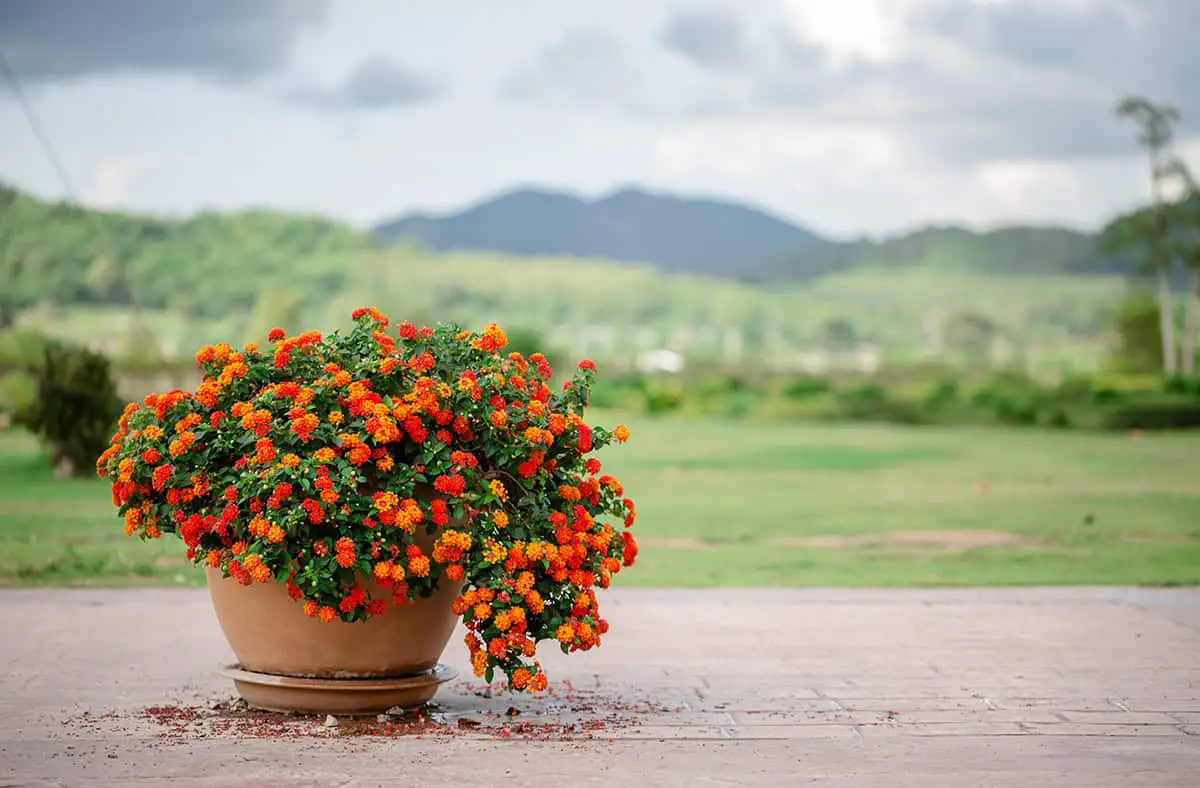You step out onto your patio, and the vibrant colors of lantana greet you, instantly lifting your mood. Growing lantana in pots is a perfect way to add a splash of color to any outdoor space, no matter how small. Get all the tips and tricks to grow and care for lantana in pots for a vibrant display.
Table of Contents
Choosing the Right Pot
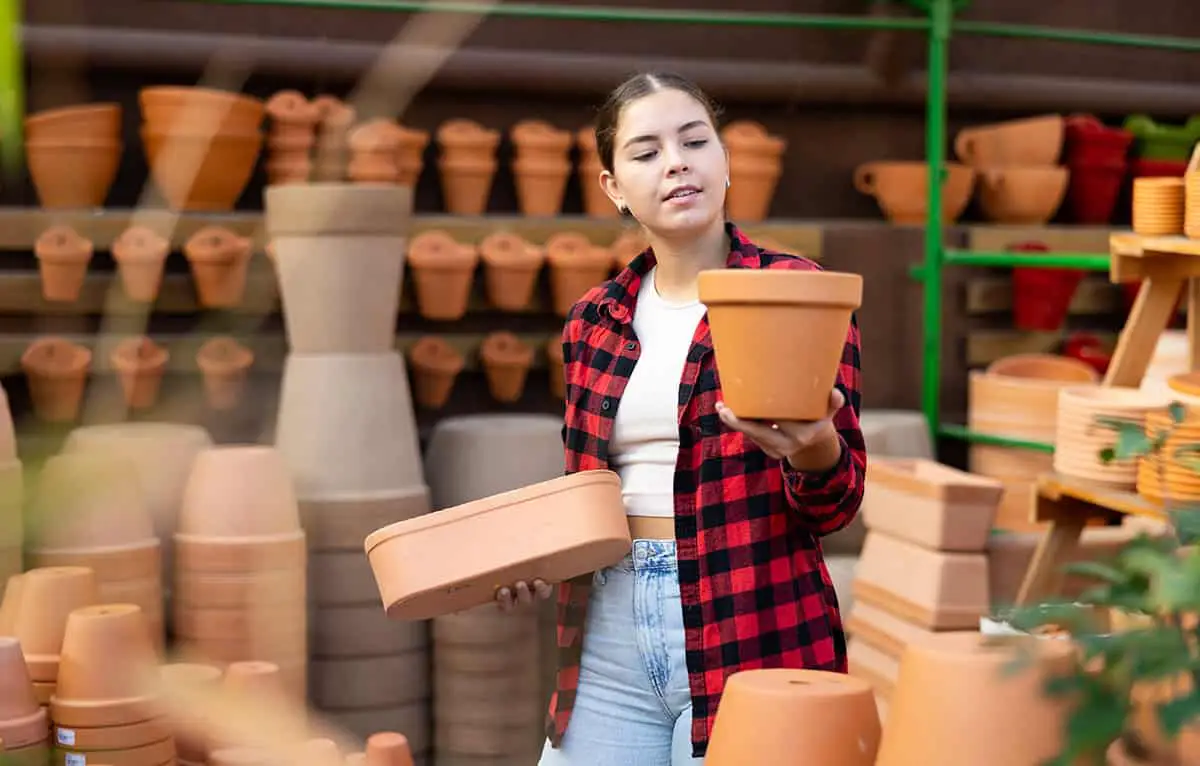
Selecting an appropriate pot is crucial for growing Lantana successfully. The right pot enhances growth, provides stability, and ensures the health of your plant.
Pot Material
Your choice of material impacts your Lantana’s well-being. Clay or terracotta pots are porous, allowing soil to breathe and water to evaporate more efficiently. This suits Lantana’s preference for dry conditions. On the other hand, plastic or glazed ceramic pots retain more moisture, which can be beneficial in hotter climates but risk overwatering.
Drainage Requirements
Good drainage is non-negotiable for Lantana. Ensure the pot has at least one drainage hole at the bottom. This prevents water from pooling at the roots, which can cause rot and fungal diseases. If your pot lacks holes, consider drilling a few yourself.
Size Considerations
Start with a pot that’s the right size for your Lantana. A container that’s too large for a small plant can hold too much water, increasing the risk of root rot. Conversely, a pot that’s too small will restrict growth and require frequent watering. A pot 12 inches wide is a good starting point, as it offers enough room for root development without holding excessive moisture.
Selecting Lantana Varieties
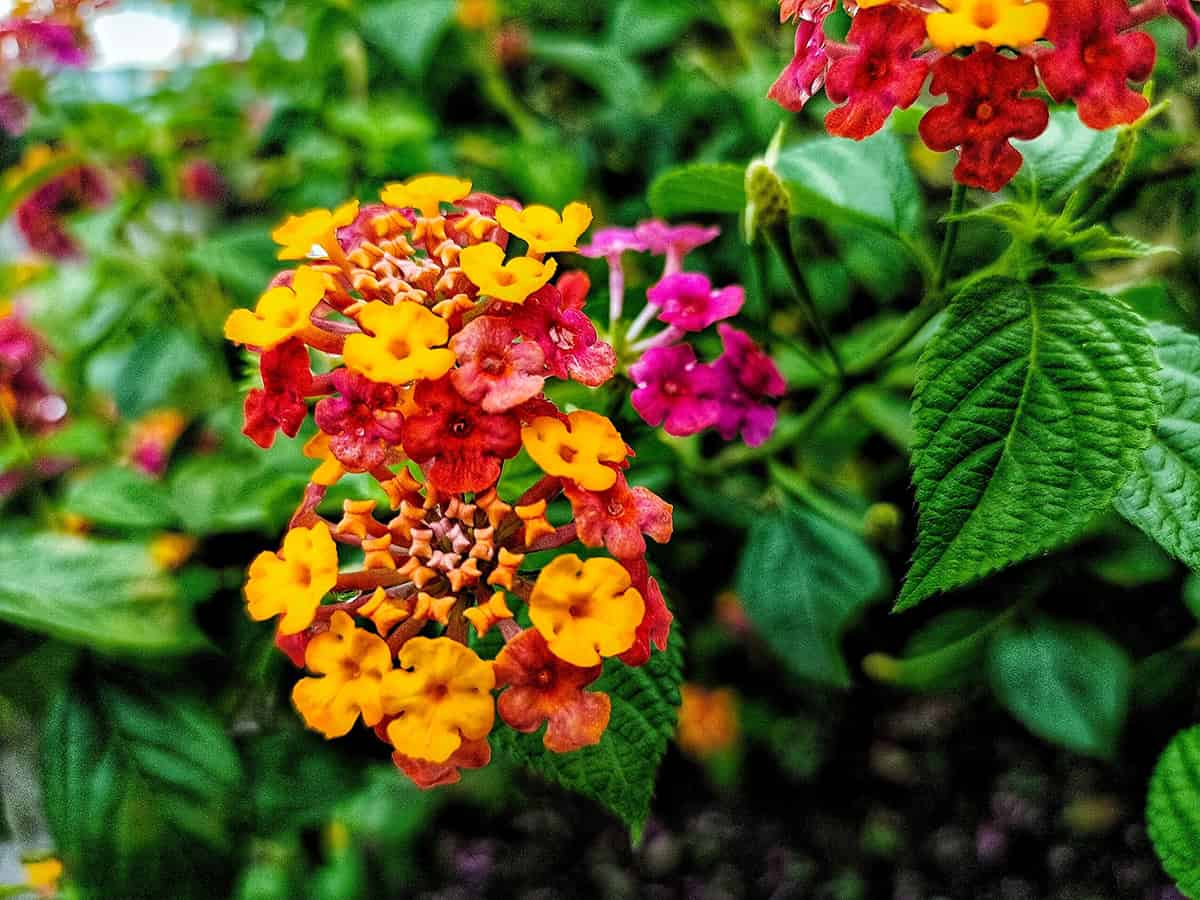
When you choose Lantana varieties for your pots, consider the plant’s mature size and flowering habits. Lantana camara and its sterile varieties usually offer a bushy growth and act as perennials. For a more compact plant, select from the many available named cultivars and hybrids. These often bloom earlier, are more colorful, and maintain their flowers well.
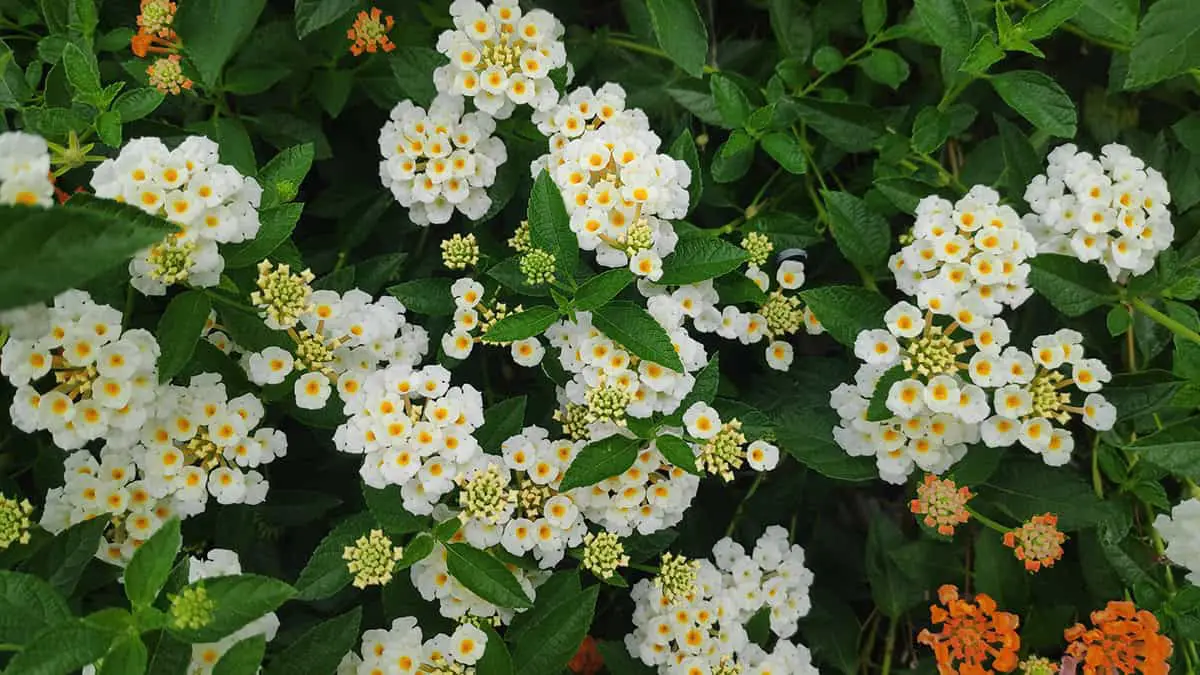
It is important to note that climates affect how Lantana behaves. In colder regions, treat Lantana camara as an annual or overwinter it indoors. For groundcover needs, Lantana montevidensis, with its trailing habit and profuse flowers, could be your choice. This variety spreads out, filling pots with lavender, purple, or white blossoms.
All Lantana like well-drained soil, will thrive in full sun, and attract butterflies. Ensure pots allow good drainage to keep plants healthy. In regions with warm winters, care for perennials to promote thriving year after year. Lantana’s tolerance to drought makes it suitable for container gardening, ensuring you cater to your plant’s needs for optimal growth and blooming.
Potting Mix and Soil Preparation
Lantana thrives in a well-draining potting mix. Aim for a pH between 6 and 6.5. High organic matter is key for robust lantana pots. You’ll achieve this balance easily with a mix of peat, compost, and perlite.
You need full sun for the plant, meaning at least eight hours daily. Plant in a spot where your lantana can bask in plenty of light. When you prepare the pot, mix in a general-purpose fertilizer. A ratio equal in Nitrogen (N), Phosphorus (P), and Potassium (K) is essential. Incorporate it at planting time.
After planting, lantanas are low-maintenance. Regular watering and occasional fertilizing will suffice. If you notice slow growth, a water-soluble fertilizer might help. But use it sparingly. Overfertilizing can harm your lantana.
Planting Techniques
Growing Lantana in pots requires precise techniques to ensure the vigorous growth and blooming of your plants. The correct setup paves the way for lush foliage and vibrant flowers.
Transplanting Young Lantana
When you decide to transplant young Lantana, select a pot with adequate drainage holes. This aids in preventing water-logged soil, which can lead to root rot. Choose a potting mix that is rich and well-draining, as Lantanas thrive in well-drained soil. Gently remove the Lantana from its previous container, taking care not to damage the roots. Place the plant in the new pot, filling it with soil up to the same level it was in its original container. Water the plant immediately to help settle the soil around the roots.
Seeding Directly in Pots
If you’re seeding Lantana directly in pots, it’s crucial to start with warm soil as Lantana seeds need warmth to germinate. Distribute the seeds evenly over the soil’s surface, then lightly cover them with more potting mix. Keep the soil consistently moist but not waterlogged. Typically, it is best to provide warmth, such as from a heat mat, to encourage germination. As your Lantana seedlings grow, ensure they receive full sun exposure for robust growth.
Watering Lantana in Pots
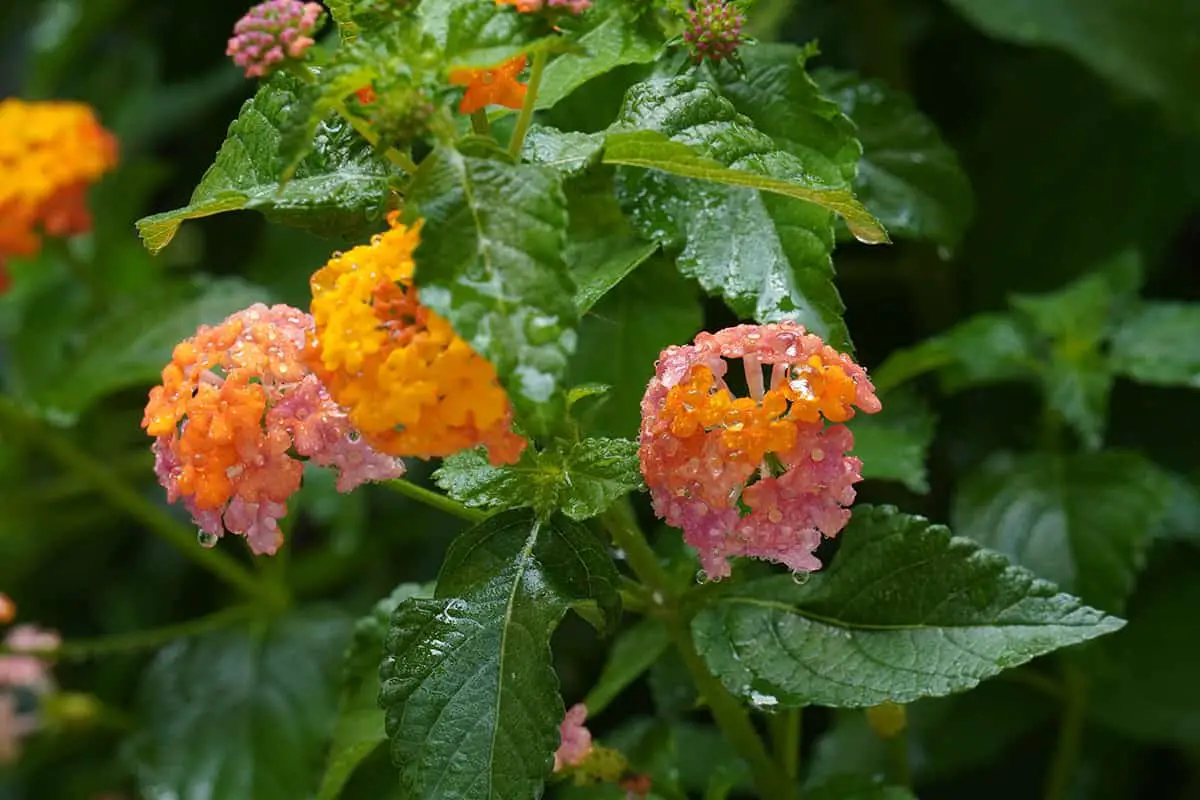
Watering your potted Lantana is a delicate balance. These plants thrive when the top 1-2 inches of soil dry out between waterings. Check the soil with your finger. If it’s dry at that depth, it’s time to water.
In hotter temperatures, Lantana may need water daily, especially in containers. Make sure your pots have proper drainage holes to prevent waterlogging. Overwatering can lead to root rot, a common problem that can be detrimental to your Lantana’s health.
For optimal growth, consistent watering is key. But equally important is not to let your plants sit in water. If the container’s saucer collects water, empty it regularly. This care ensures vibrant blooms and a healthy Lantana plant in your pot.
Sunlight and Temperature
Growing Lantana in pots requires adequate sunlight and warmth. Ensure your Lantana gets plenty of sunshine. Aim for full sun exposure, ideally six hours or more each day. It thrives in hot conditions, responding well to heat.
Your Lantana needs warm soil to prosper. It’s best to wait until the danger of frost has passed before planting. Soil temperatures should be above 60 degrees F before you position your pot outdoors. High temperatures facilitate blooming and encourage vigorous growth.
In cooler climates, Lantana can still flourish with the right care. If you live in an area with colder weather, consider moving your pots to a sunny, sheltered spot. This can help maintain appropriate temperatures for your plant. Remember, Lantana prefers consistency and does not tolerate extreme cold well.
Pruning and Maintenance

To keep your lantana thriving in a pot, regular pruning and maintenance are essential. These actions encourage more blooms and prevent your plant from becoming too leggy.
Pruning Techniques
When you prune lantana, aim to promote air circulation and shape the plant. Start by removing any damaged or dead stems. This keeps the plant healthy and directs energy to the growing parts. Then, trim the stems above the leaf sets to encourage branching. Cutting back the plant by one-third can rejuvenate it and trigger a flush of new growth.
Seasonal Maintenance
In spring, after all the risk of frost has passed, it’s time for seasonal maintenance for your lantana. Snip away old growth from the previous year to make room for new stems. As temperatures rise, your lantana will begin to grow more actively. It’s crucial to ensure it has the warmth it prefers. In fall, as the growing season ends, reduce watering and prepare the plant for winter. If your region experiences cold winters, consider moving the pot indoors to protect the lantana from the frost.
Pest and Disease Management
Growing Lantana in pots requires vigilant pest and disease management. You need to identify issues early and treat them efficiently to ensure the health of your Lantana.
Common Pests
Your potted Lantana might attract pests such as aphids and lace bugs. Aphids feed on the sap, weakening the plant. Treat them promptly with insecticidal soap or neem oil. The lantana lace bug poses a severe threat by causing leaf discoloration and drop. Introduce beneficial insects like ladybugs as a natural control measure for these pests.
Disease Prevention
Overwatering leads to root rot, a common disease in Lantana. Ensure your pot has adequate drainage and only water when the topsoil feels dry. Prevent disease by choosing a location with good air circulation to keep the leaves dry. Avoid the common pitfall of overcrowding plants, which fosters disease. Keep an eye out for signs of distress and act swiftly to mitigate any issues.
Winter Care for Lantana
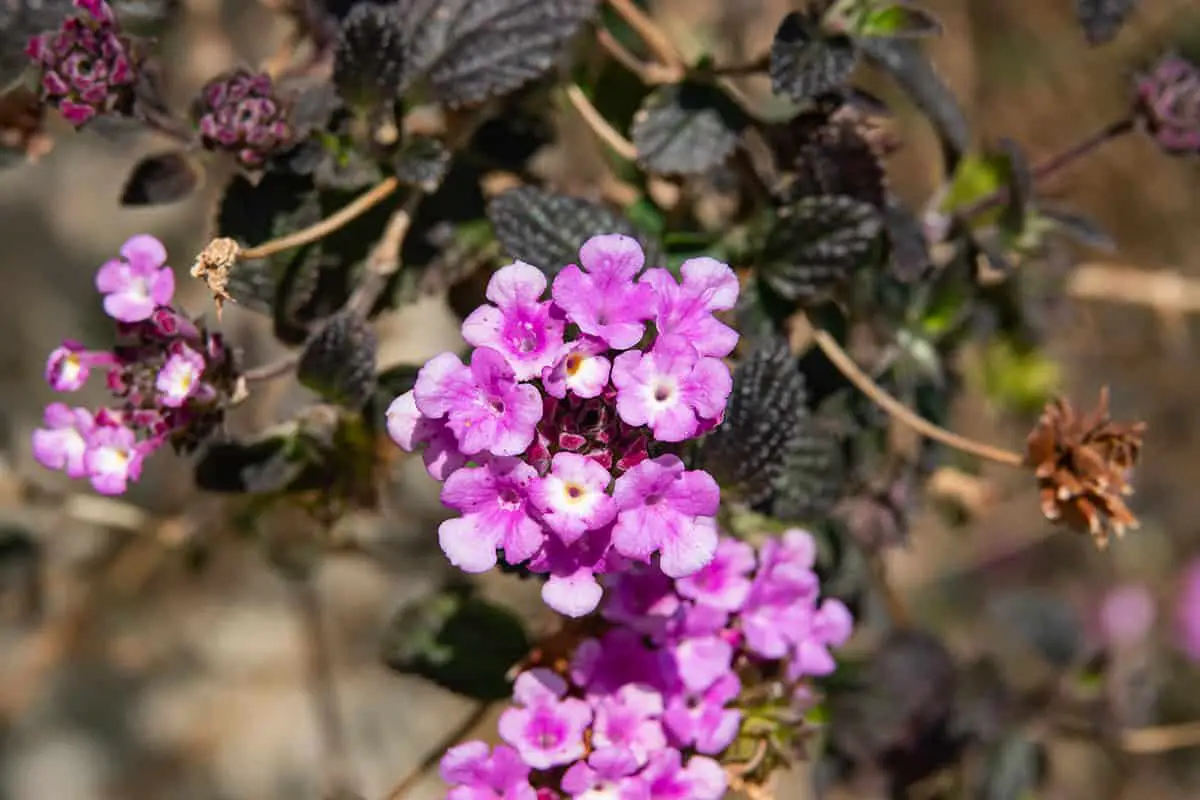
During the colder months, lantana requires special attention to survive and thrive. Your lantana can flourish with the right overwintering strategies and indoor relocation.
Overwintering Strategies
To protect your lantana in winter, you need to prevent frost damage. Begin by trimming the plant back, leaving about a third of its size to conserve its energy. When temperatures drop, cover the pot with a frost cloth to shield the lantana from cold snaps. If you live in a region with mild winters, this may be all the care your lantana needs.
Indoor Relocation
If winter in your area brings harsh conditions, bring your lantana indoors to keep it warm. Find a sunny spot, as your plant still needs plenty of light to survive the season. Water the lantana sparingly, keeping the soil slightly moist but not wet.
